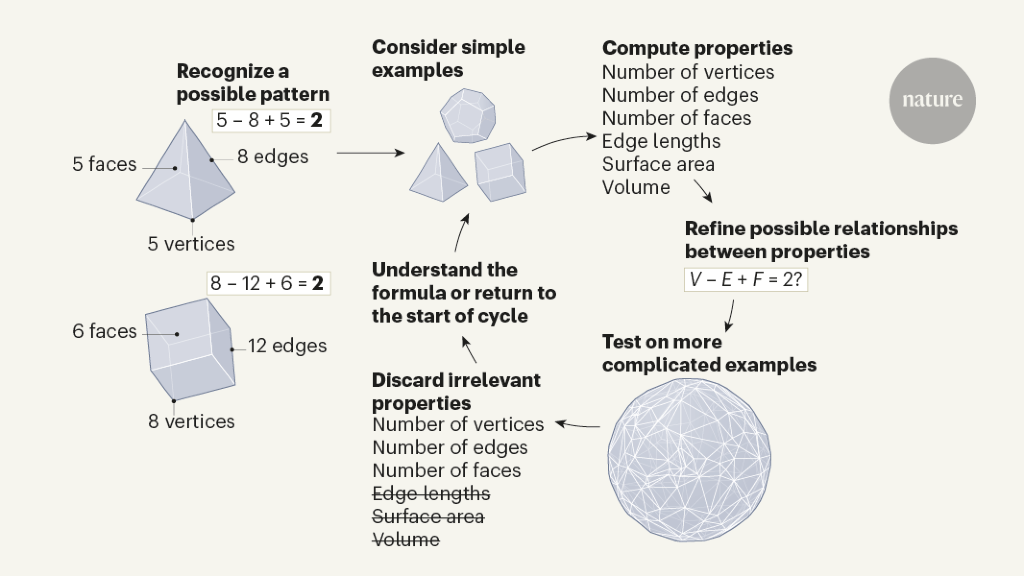NEWS AND VIEWS 01 December 2021
Mathematicians have been developing theories by studying examples throughout history. For instance, by looking at a cube and a pyramid, one might realize that the number of vertices, edges and faces are related. A mathematician recognizes such a pattern, extends it to more-general shapes, and then starts to think about why this relationship might hold. Parts of this process involve computations, for which mathematical software has been useful since it first became available in the 1960s. However, human creativity enables mathematicians to instinctively understand where to look for emerging patterns. Writing in Nature, Davies et al. now describe a way of using artificial intelligence (AI) techniques to help with the creative core of the mathematical-research process1. Nature 600, 44-45 (2021) doi: https://doi.org/10.1038/d41586-021-03512-4 1.Davies, A. et al. Nature 600, 70–74 (2021).Article Google Scholar 2.Peifer, D., Stillman, M. & Halpern-Leistner, D. Proc. Mach. Learn. Res. 119, 7575–7585 (2020). Google Scholar 3.Lample, G. & Charton, F. Preprint at https://arxiv.org/abs/1912.01412 (2019).4.He, Y.-H. The Calabi–Yau Landscape: From Geometry, to Physics, to Machine Learning (Springer, 2021). Google Scholar Download references The author declares no competing interests. Machine learning Mathematics and computing
https://www.nature.com/articles/d41586-021-03512-4
